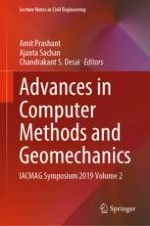2020 | OriginalPaper | Chapter
Experimental Studies on Controlled Low Strength Materials Using Black Cotton Soils and Comparison of Results with Taguchi Model
Authors : B. N. Skanda Kumar, M. P. Naveena, Anil Kumar, A. Shashishankar, S. K. Darshan
Published in: Advances in Computer Methods and Geomechanics
Publisher: Springer Singapore
Activate our intelligent search to find suitable subject content or patents.
Select sections of text to find matching patents with Artificial Intelligence. powered by
Select sections of text to find additional relevant content using AI-assisted search. powered by
